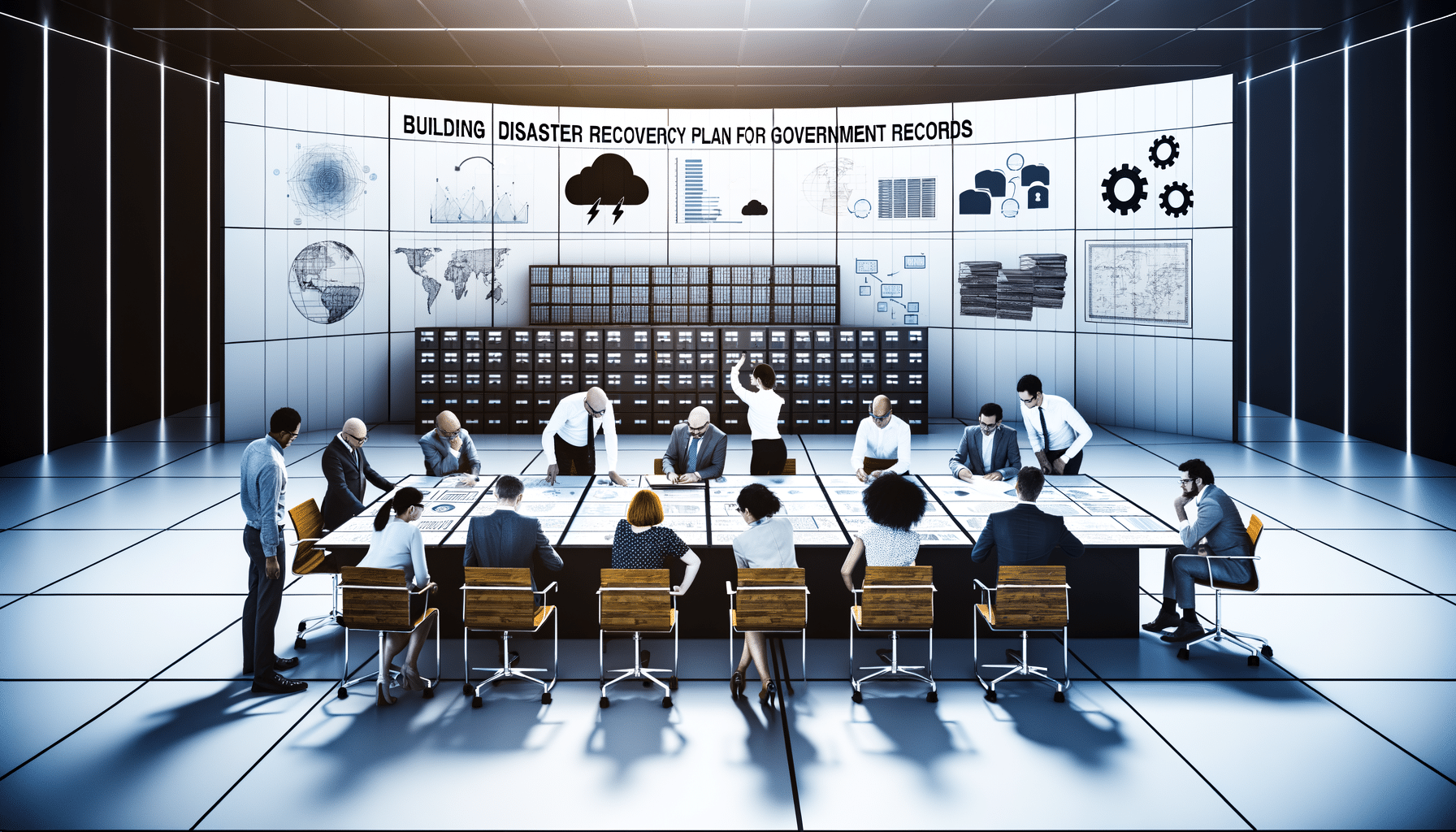Securing the Vault: Safeguarding Government Records with Disaster Recovery Plans
In today’s digital age, the guardianship of government records has never been more pivotal. Government entities are custodians of an abundance of data—ranging from birth records to vital governmental policies—that must be preserved with unparalleled security. We’ve come a long way in record management technology, but the question that persists is: “How prepared are we for the unforeseen?” This is where a meticulous disaster recovery plan becomes the linchpin.
Understanding Disaster Recovery
The term “disaster recovery” might seem daunting, but at its core, it is a strategic approach to ensure that organizational operations can continue or swiftly resume after a catastrophic incident. Whether due to natural disasters, cyber-attacks, or other calamities, government records are a prime target and require robust protective measures. A comprehensive disaster recovery plan safeguards not only the integrity and confidentiality but also ensures the availability of these records when they’re most needed.
Foundations of a Robust Disaster Recovery Plan for Government Records
Creating an invincible disaster recovery plan involves multiple layers and steps. Here’s a breakdown of some foundational elements:
- Risk Assessment: It’s essential to identify potential risks. These could be natural hazards, cyber threats, technical failures, or even human errors. By evaluating the probability and impact of these risks, you can prioritize which areas need fortifying.
- Data Segmentation and Classification: Before devising recovery strategies, records need to be classified based on sensitivity and criticality. Such categorization aids in determining the recovery priority and methodologies.
- Backup & Replication: Regularly backing up data is crucial. Utilizing technologies like RecordsKeeper.AI can automate this process and eliminate human errors. Moreover, implementing real-time replication ensures that data remains current even if disaster strikes.
- Technological Integration: Leveraging AI and Blockchain not only modernizes record management but also enhances security infrastructures. Blockchain, in particular, provides an immutable ledger of records, offering unparalleled protection against tampering.
- Disaster Recovery Testing: Regular drills and simulations ensure that the plan is not just on paper but can be executed seamlessly in real-life scenarios. Such exercises unveil vulnerabilities that might have been overlooked during the planning stage.
Implementing AI and Blockchain for Enhanced Security
Integrating advanced technologies like AI and Blockchain into disaster recovery plans significantly amplifies the robustness and efficiency of government record management systems.
AI-Powered Insights: AI has the innate capability to autonomously sort, tag, and manage records, ensuring that human errors are minimized. Through machine learning, AI can predict potential threats and suggest proactive measures, tailoring disaster recovery plans to ever-evolving risk landscapes.
Blockchain’s Tamper-Proof Architecture: The immutable nature of Blockchain technology means that once a record is stored, it cannot be altered without leaving a trace. This ensures that even in the face of a data breach, records remain incorruptible and legitimate.
The Compliance Conundrum
Government entities are held to stringent compliance regulations, which only magnifies the importance of a thorough disaster recovery plan. Industry standards such as GDPR, HIPAA, and others outline specific requirements for data protection. By integrating compliance management into the disaster recovery blueprint, governmental bodies can ensure adherence while simultaneously reducing the risk of legal complications post-disaster.
Sealing the Deal with Secure Data Rooms
A vital component of any disaster recovery plan is the concept of a secure data room. These are specially designed virtual spaces where sensitive government records can be stored and accessed under tightly controlled conditions. With access tracking and robust encryption methods, these data rooms serve as a fortress for the most classified information.
Conclusion: A Call to Action
Navigating the complexities of disaster recovery planning isn’t just a task; it’s a responsibility that cannot be overlooked. As someone who’s deeply engaged in the realms of AI, Blockchain, and record management, I’ve witnessed firsthand the transformation these tools bring to the table. If you’re at the helm of record management within your government entity, I urge you to consider how your current plans stand up against potential threats. Ensuring the longevity and security of records is a task of monumental importance, and platforms like RecordsKeeper.AI are here to bolster your efforts.
Explore these possibilities and let’s work towards creating a future where government records are more secure than ever. Watch this space and follow my journey as I continue to share insights rooted in today’s technological innovations for a safer tomorrow.








